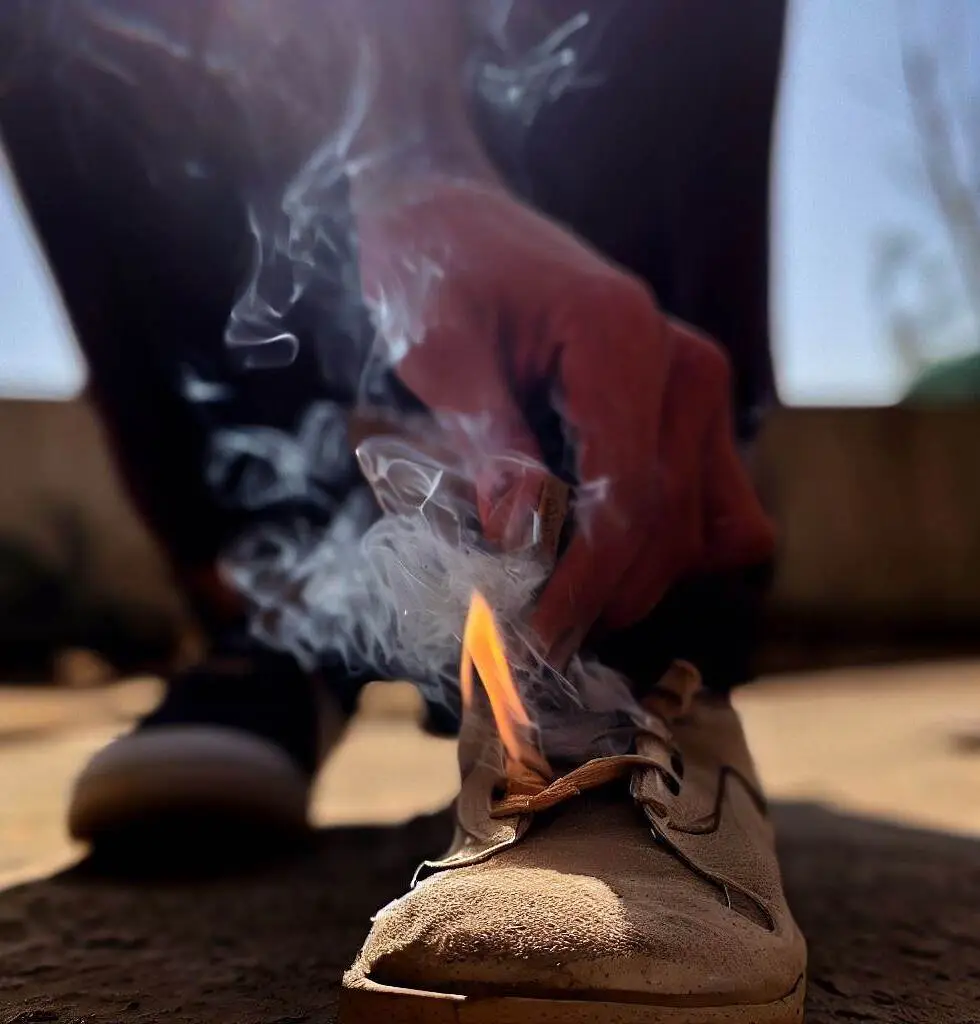Hey there, fellow adventurers! Did you know that mastering the valuable art of how to light a match without the box is incredibly useful and important?
This trick can be a real lifesaver in the great outdoors or during unexpected situations.
Imagine being stranded in the woods, needing to start a fire, or dealing with a power outage at home.
I have into such situation in multiple times, and trust me it’s not a good situation to be in. So, it’s always a better to keep a lighter or matchbox with you whenever you’re doing a solo trek or adventure.
However, I am going to discuss multiple ways which should come handy in lighting a fire when need be even without the matchbox.
Learning how to light a match without its box is like having a secret superpower, allowing you to easily overcome these challenges.

So, let’s embrace our inner MacGyvers and learn this handy skill because you never know when it might come in handy!
Quick Recommendations
How to light a match without the box? (Different methods Explained)
Knowing how to light a match without a matchbox can be achieved through various methods. The friction method uses rough surfaces like sandpaper, concrete, or a file to strike the match head.
Another approach is the glass lens method, where sunlight is focused on the match head to start a fire. Chemical reactions, such as combining potassium permanganate with glycerin, create enough heat to ignite a match.
Lastly, utilizing battery power by connecting the match head to the positive and negative terminals can produce sparks to light the match. Each method requires caution and adequate safety measures.
Method 1: Striking on a Rough Surface

- Find a rough surface: Look for a surface that’s coarse enough to create friction, like sandpaper, unpolished stone, or even the rough edge of a brick.
- Hold the match correctly: Grip the matchstick firmly between your thumb and index finger, with the match head facing outwards, away from your fingers.
- Position the match: Place the match head against the rough surface at a slight angle, around 45 degrees. This will help generate the necessary friction to ignite the match.
- Apply pressure: Press the match head slightly against the surface. Make sure not to press too hard, as this could break the match or damage the match head.
- Strike the match: Quickly slide the match head across the rough surface swiftly. The friction created by this action should produce enough heat to ignite the match head.
Method 2: lighting a match using other matches
- Gather the matches: Collect two or more matches for this process. You’ll need at least one to be the “source” match and another to be the “target” match you want to light.
- Prepare the source match: Choose one match to act as the source of the flame. Light this match using your preferred method (e.g., with a matchbox, lighter, or rough surface).
- Hold the target match: Take the unlit target match and grip it firmly between your thumb and index finger, with the match head facing outwards.
- Bring the matches together: Carefully bring the burning source match close to the unlit target match head, ensuring the flame is in direct contact with the target match head.
- Ignite the target match: Allow the flame from the source match to heat the target match head until it ignites. You may need to move the source match slightly to ensure the flame envelops the target match head.
Method 3: lighting a match with your fingernail

- Choose a match: Select a strike-anywhere match, as they are designed to ignite when struck against any rough surface, including a fingernail.
- Prepare your fingernail: Ensure your thumbnail is long enough and clean. A longer nail provides a better striking surface.
- Hold the match: Firmly grip the matchstick between your thumb and index finger of your non-dominant hand, with the match head facing outward.
- Position your thumbnail: Place your thumbnail against the match head, covering about half of it. Hold the match at a slight angle, around 45 degrees.
- Strike the match: Scrape your thumbnail across the match head with a swift, controlled motion. Apply pressure, but avoid using excessive force to prevent injury.
- Ignite the match: If done correctly, the friction between your thumbnail and the match head will generate enough heat to ignite the match.
Method 4: lighting a match with your shoe

- Choose a match: Opt for a strike-anywhere match that can ignite when struck against a rough surface, such as a shoe sole.
- Select the right shoe: Pick a shoe with a textured rubber sole or a hard, rough surface to create enough friction for ignition.
- Remove the shoe: Take off the shoe you plan to use for striking the match. This ensures better control and safety during the process.
- Hold the match: Firmly grip the matchstick between your thumb and index finger, with the match head facing outward.
- Position the shoe: Steady with your other hand, placing the sole flat against a stable surface.
- Strike the match: Press the match head against the shoe’s textured sole and quickly strike it at a 45-degree angle. Apply firm pressure, but avoid excessive force.
- Ignite the match: If executed correctly, the friction generated between the match head and the shoe sole will create enough heat to ignite the match.
Method 5: lighting a match with your teeth

- Choose a match: Select a strike-anywhere match for its ability to ignite when struck against a rough surface, including teeth.
- Clean your teeth: Ensure your teeth are clean and free from any debris that may interfere with the striking process.
- Hold the match: Firmly grip the matchstick between your thumb and index finger, with the match head facing outward.
- Position your teeth: Decide which teeth you will use (usually the incisors), open your mouth, and prepare to strike the match against your teeth’s edge.
- Strike the match: Press the match head against the edge of your chosen teeth and quickly strike it at a 45-degree angle. Apply firm pressure, but avoid excessive force to prevent injury or damage to your teeth.
- Ignite the match: If done correctly, the friction between your teeth and the match head will generate enough heat to ignite the match.
Frequently Asked Questions (FAQs)
Can you light a match of anything?
No, you can’t light a match of anything. A match requires a rough surface to ignite. Strike-anywhere matches can be lit on almost any rough surface, while safety matches require a specific striking surface, like a matchbox or a striker paper.
How did the Cowboys light match on their boots?
Cowboys often lit matches on the rough underside of their boots or a metal spur. They would strike the match against the rough surface, usually with a downward motion, to create the necessary friction and heat to ignite the match.
What will cause a match to be lit?
A match will light when the friction generated between the match head and a rough surface creates enough heat to ignite the chemicals on the head. Strike-anywhere matches contain chemicals on their entire match head and can be lit on almost any rough surface. In contrast, safety matches only have chemicals on their striking surface, so they require a specific striking surface to ignite.
Conclusion:
Learning the process of how to light a match without the box is a skill that can be quite useful in various situations.
Whether using alternative striking surfaces like a shoe sole or teeth or employing other techniques like sparking a lighter, the key to success lies in mastering the art of friction and heat generation.
Always prioritize safety and practice caution when attempting these methods, as fire can be unpredictable and hazardous.
Once you’ve honed your skills and familiarize yourself with the techniques outlined in this article, you’ll be well-equipped to light a match without a box, ensuring you’re prepared for any situation.





